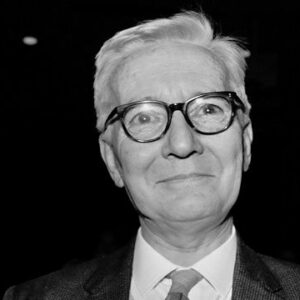Nikolaas Tinbergen was a Dutch biologist and bird expert who shared the Nobel Prize in Physiology or Medicine in 1973. He made important discoveries about how animals act as individuals and in groups, and he wrote “The Study of Instinct,” an important book about animal behavior. He was born in The Hague, Netherlands, and spent his childhood close to nature and animals, which made him happy. Even though he was smart and bright, he wasn’t very interested in school, and by his own account, he barely made it through high school. He loved to watch how animals and birds behaved, so he went to Leiden University to study biology. At the university, he met the talented naturalist Dr. Jan Verwey, who inspired the young Tinbergen to become a scientist who studies how animals act. After getting his Ph.D., he started a career in academia. During World War II, he was taken as a prisoner of war, which stopped his career. After he was freed, he went back to his research. Together with Konrad Lorenz, he built a theoretical framework for the study of ethology, which was a new field in the 1930s. He and Lorenz also did a lot of important research together, which changed ethology as a science.
Early years and childhood
Nikolaas Tinbergen was born on April 15, 1907, in The Hague, Netherlands. He was the third child of Dirk Cornelius Tinbergen and Jeanette van Eek. His mother was a caring person, and his father, who taught the Dutch language and history, worked hard and was completely devoted to his family. Tinbergen had a happy childhood and grew up in a place that was good for his mind.
He was always interested in animals and the outdoors from a young age. He used to watch birds and fish when he was a young boy, which sparked his interest in biological sciences.
He didn’t like school and didn’t plan to go to college after he graduated from high school. After high school, he got a job at the Vogelwarte Rossitten bird observatory. The place’s founder, Professor J. Thienemann, was a big inspiration for him. Tinbergen finally decided to go to Leiden University to study biology.
In 1932, he earned his Ph.D. His dissertation was about how bee-killer wasps behave, and he showed that they use landmarks to find their way around.
Nikolaas Tinbergen’s Career
Nikolaas Tinbergen was able to join the Netherlands’ small group of explorers during the International Polar Year in 1932 and 1933. Since he was already married, he brought his wife with him on the expedition, and they spent several months living with the Eskimos. During this time, he looked at how snow buntings, phalaropes, and Eskimo sled dogs behave in terms of evolution.
When he got back to the Netherlands, he was offered a job teaching at Leiden University, where he taught comparative anatomy and set up a course for undergraduates on how animals act. In the 1930s, he studied how beewolves found their way home and how other insects and birds behaved.
In 1936, Konrad Lorenz, an Austrian ethnologist, was invited to Leiden for a small conference on “Instinct.” Tinbergen and Lorenz hit it off right away, and they started building a theoretical framework for the study of ethology, which was a new field at the time.
The two people thought that all animals have a fixed-action pattern, which is a set of movements or behaviors that they do over and over again instead of just reacting to their surroundings on a whim. Tinbergen showed that some animals need to learn behavior in order to stay alive.
World War II got in the way of Tinbergen and Lorenz’s work. Tinbergen was taken prisoner of war and held in a German camp for two years. After the war, he was asked to talk about animal behavior in the United States and England. He moved to England, where he taught at Oxford University.
His book, “The Study of Instinct,” came out in 1951. The book went into detail about how some species learn to send signals as they evolve. Ethology was given a new lease on life by a seminal work that gave several important insights into behavioral science.
In 1966, he became a professor and fellow at Wolfson College in Oxford. In his later years, he spent a lot of time studying autism in children.
“The Herring Gull’s World” (1953), “Curious Naturalists” (1958), “The Animal in its World Vol. 1” (1972), and “The Animal in its World Vol. 2” are some of his most important books (1973).
He worked with filmmaker Hugh Falkus on a series of films about wildlife. These include “Signals for Survival,” which was published in 1969 and won the Italia Prize and the American Blue Ribbon that same year. In addition to the scientific papers he wrote, he also wrote a number of books for children, such as “Kleew” and “The Tale of John Stickle.”
Works of note
Nikolaas Tinbergen was known all over the world for his studies and discoveries about how animals act. Together with Konrad Lorenz, he did research that changed the field of ethology and paved the way for more research into animal behavior, especially what he called the “supernormal stimulus.” Many of his discoveries can also be used to study how people act.
Awards & Achievements
In 1962, the Royal Society (FRS) made him a Fellow.
Nikolaas Tinbergen, Karl von Frisch, and Konrad Lorenz shared the 1973 Nobel Prize in Physiology or Medicine “for their discoveries about how individual and social behavior patterns are organized and how they can be brought out.”
Personal History and Legacies
Tinbergen married Elisabeth Rutten in 1932, and they had five children together.
In his later years, he was depressed, and he died on December 21, 1988, after having a stroke. He was 81.
Estimated Net worth
Unknown.


